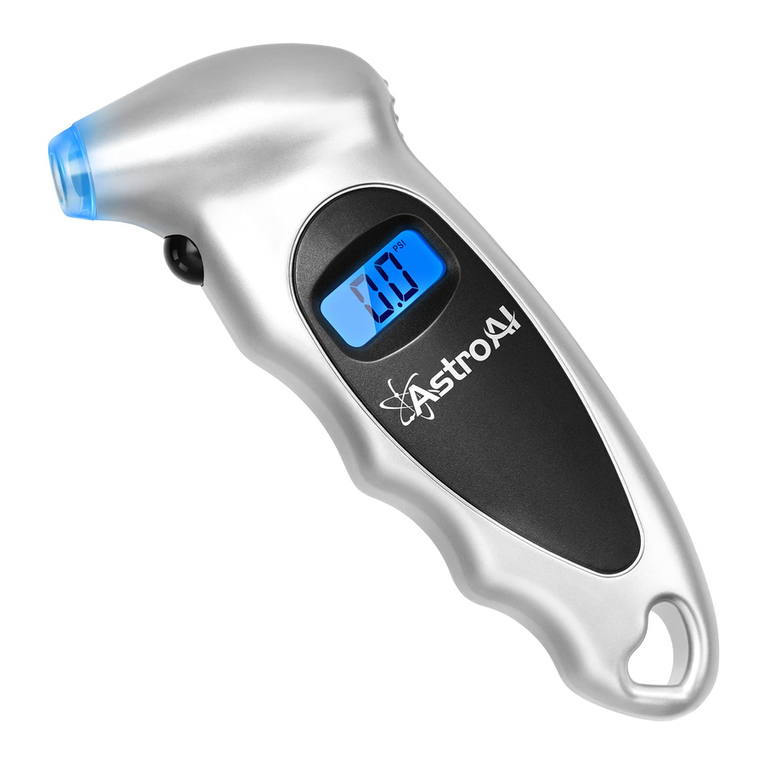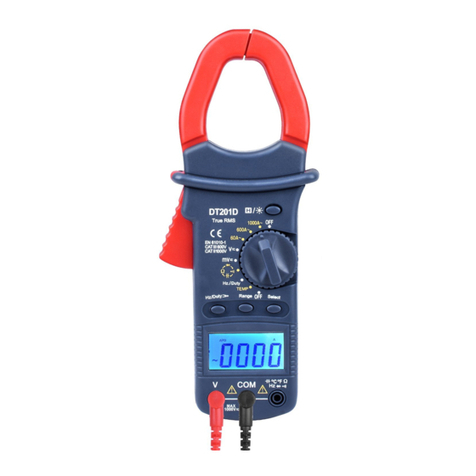WARNING: To avoid possible electric shock or personal injury, and to avoid possible damage to
the Meter or to the equipment being tested, adhere to the following rules:
● Before using the Meter, inspect the exterior casing. Do not use the Meter if it is damaged
or if all or part of the exterior casing is removed. Look for cracks or missing plastic. Pay
special attention to the insulation around the connectors.
● Inspect the test leads for damaged insulation or exposed metal. Check the test leads for
continuity.
● Do not apply more than the rated voltage, as marked on the Meter, between the
terminals or between any terminal and grounding.
● The manual rotary switch should be placed in the correct position before measurement
and should NOT be moved during measurement to prevent damage to the Meter.
● When the Meter is working at an effective voltage over 60V in DC or 30V rms in AC,
special care should be taken because there is a danger of electric shock.
● Use the proper terminals, function, and range for your measurements.
● Do not use or store the Meter in a high-temperature environment, do not expose to high
levels of humidity, or near strong magnetic fields. The performance of the Meter may
deteriorate after dampening.
● When using the test leads, keep your fingers behind the finger guards.
● Disconnect circuit power and discharge all high-voltage capacitors before testing
resistance, continuity, or diodes.
● Replace the battery as soon as the battery indicator appears. With a low battery, the
Meter might produce false readings that can lead to electric shock and personal injury.
● Remove the connection between the testing leads and the circuit being tested, and turn
the Meter power off before opening the Meter case.
● When servicing the Meter, use only the same model number or identical electrical
specifications replacement parts.
● The internal circuit of the Meter shall not be altered at will to avoid damage of the Meter
and any accident.
● Clean using a soft cloth and mild detergent for the surface of the Meter. Do not use
abrasive materials or solvents to prevent the surface of the Meter from corrosion and
damage.
● Turn the Meter off when not in use and take out the battery when it is not going to be
used for an extended period of time. Regularly check the battery as it may leak when it
has not been used for some time. Replace the battery as soon as leaking appears. A
leaking battery will damage the Meter.






























